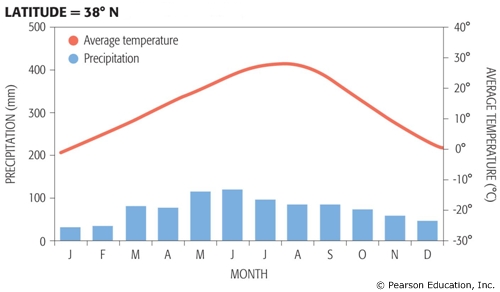The Sahara Desert, often dubbed the “Land of the Forgotten Sun,” is an enigmatic expanse that spans approximately 9.2 million square kilometers across Northern Africa. An orchestra of extremes, its climate embodies a magnificent juxtaposition—scorching days blazed by the relentless sun and freezing nights that whisper of the desert’s unyielding nature. This captivating dichotomy reveals both the beauty and the harshness that characterize one of the world’s most fascinating ecosystems.
During the sweltering daylight hours, the African sun casts a fierce luminescence across the arid landscape, rendering the air almost tangible. Daytime temperatures can soar beyond 50 degrees Celsius (122 degrees Fahrenheit), creating an environment so intense that it seems to warp reality. This relentless heat is fueled by a combination of topography and atmospheric conditions: the Sahara’s vast plateaus, dunes, and rocky terrain contribute to something akin to a solar oven, intensifying the heat and preventing any respite from the dry, sizzling atmosphere.
The sun-drenched apparitions of shimmering heat distort the horizon, transforming the desert floor into a mirage-filled paradise for the uninitiated traveler. Each step through the golden sands reveals a blinding panorama, where camels trudge laboriously, their silhouettes captivating against the merciless sun. This harsh climate can be likened to a masterful artist, painting surreal scenes with splashes of vibrant ochre and somber grays. The daytime spectacle is a reminder of nature’s prowess, evoking both awe and respect.
However, this arid desolation is not merely defined by its scorching days. As night descends, the Sahara undergoes a dramatic metamorphosis, as if cloaked in star-spangled darkness. Temperatures plummet, sometimes dipping to a numbing -5 degrees Celsius (23 degrees Fahrenheit). This sharp contrast creates an almost paradoxical realm—what was once an inferno becomes a frigid expanse where warmth is but a wistful memory. The atmospheric shift is stark; an embrace of crisp, invigorating cold envelops the landscape, inviting nocturnal creatures to teem beneath the celestial canopy.
The extraordinary range in temperature from day to night serves as a testament to the Sahara’s unique climate. A mere few hours can morph comfort into discomfort, as the sun recedes and the chill of the desert night seeps into every crevice. This less hospitable nighttime environment compels numerous desert inhabitants, both flora and fauna, to evolve exquisite adaptations. For example, many animals have developed exceptional nocturnal behavior, thriving under the soft quilt of darkness while conserving energy during the brutal midday heat.
In stark contrast to a typical temperate climate, the Sahara is largely defined by desiccation. Rainfall is a rare occurrence, averaging a meager 3 to 10 inches annually, often confined to fleeting storms that quickly evaporate into the thirsty earth. This scarcity of moisture has shaped the very fabric of life within the Sahara, as various organisms have learned to endure and adapt. The Tenacity of plants such as the hardy acacia tree or resilient xerophytes demonstrate an incredible capacity to thrive in what might seem impossibly unfavorable conditions.
Wind plays a critical role as well, sculpting the desert’s topography and giving rise to mesmerizing sand dunes that stretch majestically across the horizon. These ever-shifting formations, sculpted by relentless gales, create an impressive tapestry of ripples and slopes, often reaching heights of 250 meters (820 feet). The desert wind serves not only as a sculptor, but also as a harbinger of sandstorms— ferocious tempests that whip through the landscape, obscuring visibility and creating an unsettling sense of isolation. Those caught in the throes of a sandstorm experience a visceral reminder of the desert’s unpredictability.
The unique climate of the Sahara is not merely a backdrop to a harsh existence; it is a symbiotic relationship that fosters resilience and versatility. The inhabitants of this ethereal environment, from the indigenous Tuareg nomads to the varied wildlife, have woven their lives into the fabric of the desert. Their enduring presence speaks to a powerful connection with the land—a deep-seated understanding of its rhythm, its bounty, and its relentless temperament.
Yet, as the climate crisis looms ominously over the planet, the Sahara’s fragile ecosystem stands on the precipice of change. An increase in global temperatures and shifting weather patterns threaten to further exacerbate this already extreme climate. The specter of desertification casts a long shadow over the region, amplifying challenges faced by both human populations and indigenous species alike. It is crucial, now more than ever, to embrace a unified approach to environmental stewardship, ensuring the delicate balance of this iconic landscape is preserved for generations to come.
In conclusion, the climate of the Sahara Desert is a reflection of nature’s duality—a tangible embodiment of scorching days and freezing nights, of beauty and adversity. This breathtaking tapestry invites us to ponder the resilience of life, and the ways in which all beings strive to thrive amidst unrelenting challenges. It is our responsibility to protect these unique ecosystems, ensuring their continued existence as living chapters in the story of our planet.






